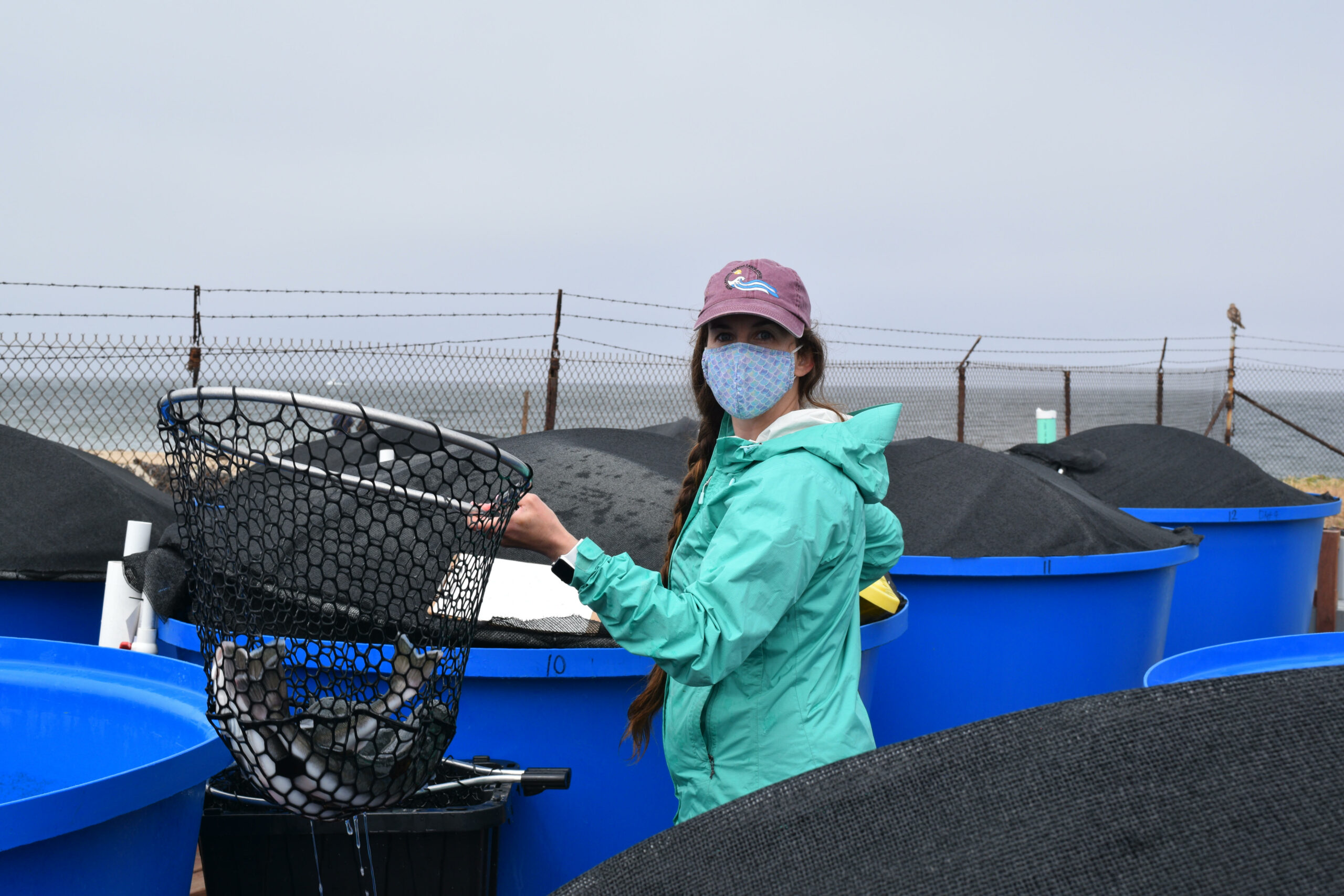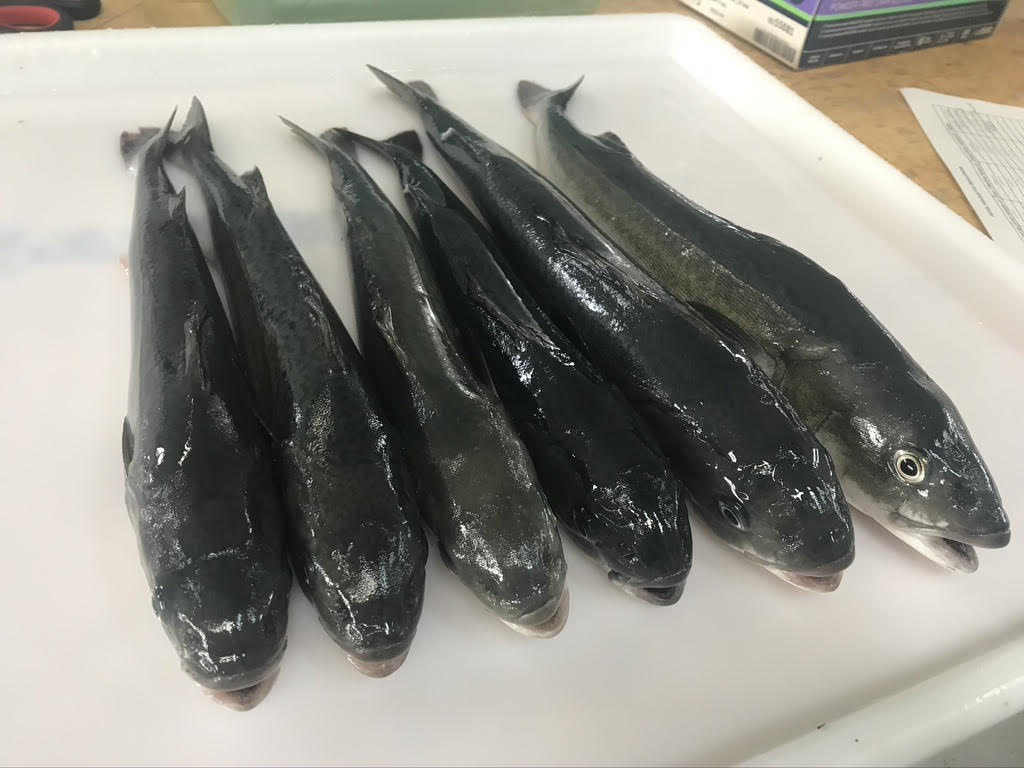"Evaluating a microalga (Schizochytrium sp.) as an alternative lipid source in fish-free feeds for sablefish (Anoplopoma fimbria) aquaculture"
A Thesis Defense by Katie Neylan
Zoom | Live-Stream | August 12th, 2022 at 1:00 pm PDT
Bio
Katie graduated from CSU Monterey Bay in 2016 with a B.S. in Marine Science. While there, Katie worked for a few MLML Ichthyology lab graduate students. Her undergrad research included two main projects: "Investigating the condition of surgeonfish along a nutrient gradient in the southern line islands" and "Examining the effects of size-selective mortality on sex change in a protogenous hermaphrodite species of goby, rhinogobiops nicholsii". Following her graduation, Katie worked for California Department of Fish and Wildlife (CDFW) as a Scientific Aid and collected data for the California Recreational Fisheries Survey in Santa Cruz, CA.


Thesis Abstract
Alternative feeds for finfish aquaculture are critical for the sustainable expansion of the aquaculture industry. Fish that are farmed for human consumption are often carnivorous; therefore, the industry uses wild-caught forage fish as a primary ingredient in farmed fish feeds in the form of fish meal (FM) and fish oil (FO). With the aquaculture industry expanding, alternative ingredients are needed to safeguard fisheries' sustainability and future aquaculture development. While some alternative feed ingredients have been identified, it is necessary to improve the existing options and identify alternative ingredients with higher concentrations of omega-3 polyunsaturated fatty acids (PUFAs). This study was designed with six feed treatments to test a microalga, Schizochytrium sp., as an alternative feed ingredient for sablefish (Anoplopoma fimbria). The two fish ingredient control diets are called +FM+FO (contains both FM and FO) and -FM+FO (contains FO). The fish-free diets completely replace FO with flax oil (FF Flax) or a combination of flax oil and low, moderate, or high inclusion of Schizochytrium sp. (FF LowSc, FF ModSc, and FF HighSc) in the feeds. After a five-month feeding trial, sablefish condition metrics, whole-body proximate composition, and apparent digestibility coefficients were not different across diet treatments. In contrast, sablefish growth was influenced by treatment, with the high microalga-inclusion diet (FF HighSc) performing as well as the fish-ingredient controls. Fillet fatty acid profiles were also influenced by diet treatment, generally reflecting the fatty acid profiles of the feed. Total PUFAs were higher in the fish-free diets than in the controls. These results suggest Schizochytrium sp. can increase PUFA concentrations in fish fillets, while not compromising fish health and growth, making it a viable ingredient for alternative sablefish feeds.


